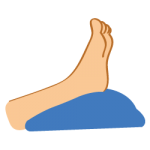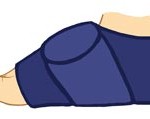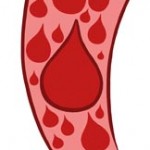You should only consider surgery for your Tendonitis if conservative treatment has failed to give you any results. However, if you have a complete tendon tear, where your tendon is in two separate pieces, surgery may be your only option. For Tendonitis that doesn’t involve a complete tear, surgery should be a last resort.
Surgery is very serious business. It’s invasive, involves the use of anesthesia, and there’s a long recovery time. It can also be costly for those without insurance. Anyone considering surgery should be aware of these potential risks:
Risks Associated With Surgery
- Infection
- Bleeding
- Trouble breathing
- Side effects from medications
Risks Specific to Tendon Surgery
- Scar tissue (prevents smooth joint movement)
- Nerve damage
- Partial loss of joint function
While it’s called Tendon “Repair” Surgery, it’s not always as simple as sewing the tissue back together. If the damage is bad enough, you may require a tendon graft. This involves taking a piece of tissue from another area of your body and “grafting” it onto the damaged tendon, thus “repairing” it. Now you have two areas of incision that need to be healed!
Another issue with surgery is that there are no guarantees. This could be said about any treatment for Tendonitis, but those other treatments don’t involve going under the knife. It’s possible that surgery won’t improve your condition. Surgery could even cause your condition to worsen. It’s also possible for your tissue to come apart again, causing you to go back in for a second surgery.
Types of Tendon Surgery
Arthroscopic – Arthroscopic surgery is less invasive than open surgery. It involves small incisions that tiny cameras and medical tools are inserted into, in order to perform the procedure.
Open – Open surgery is the more invasive of the two options, and involves a larger incision being made, so the surgeon is able to fully view and repair the damage. This procedure is usually performed on larger or more complicated tears.
What to Expect After Tendon Surgery
After surgery, you may have to wear a cast or splint, depending on which area of the body you were operated on. You can expect a timeline of 6-12 weeks for healing.
Why Conservative Treatment Is Better
While surgery can work for people who are all out of options, it involves a variety of risks and complications. Conservative treatment, however, is much more affordable, non-invasive, safer and easily accessible.
 Rest – Tendonitis is caused by overuse. Rest the affected area as much as possible to lessen the strain and prevent further injury.
Rest – Tendonitis is caused by overuse. Rest the affected area as much as possible to lessen the strain and prevent further injury.
 Cold Compression – Cold and compression together are the champions in the fight against pain and swelling. These symptoms can be severe with Tendonitis, but by using cold and compression, they can be greatly reduced.
Cold Compression – Cold and compression together are the champions in the fight against pain and swelling. These symptoms can be severe with Tendonitis, but by using cold and compression, they can be greatly reduced.
 Blood Flow – Good blood circulation is what helps the body heal itself. When high-quality, healthy blood flow is brought to the injured tendon, this works to quickly repair the damage. There are devices available that you can use to stimulate optimal blood flow to your injury for rapid healing.
Blood Flow – Good blood circulation is what helps the body heal itself. When high-quality, healthy blood flow is brought to the injured tendon, this works to quickly repair the damage. There are devices available that you can use to stimulate optimal blood flow to your injury for rapid healing.